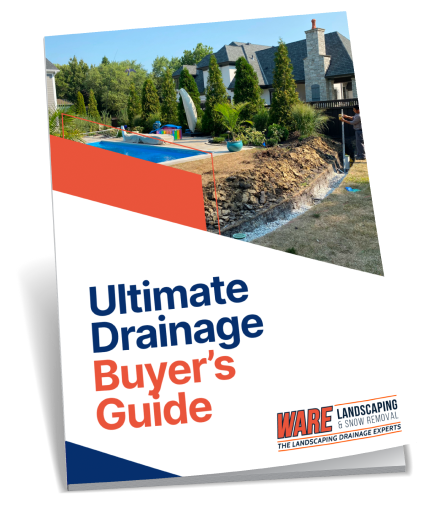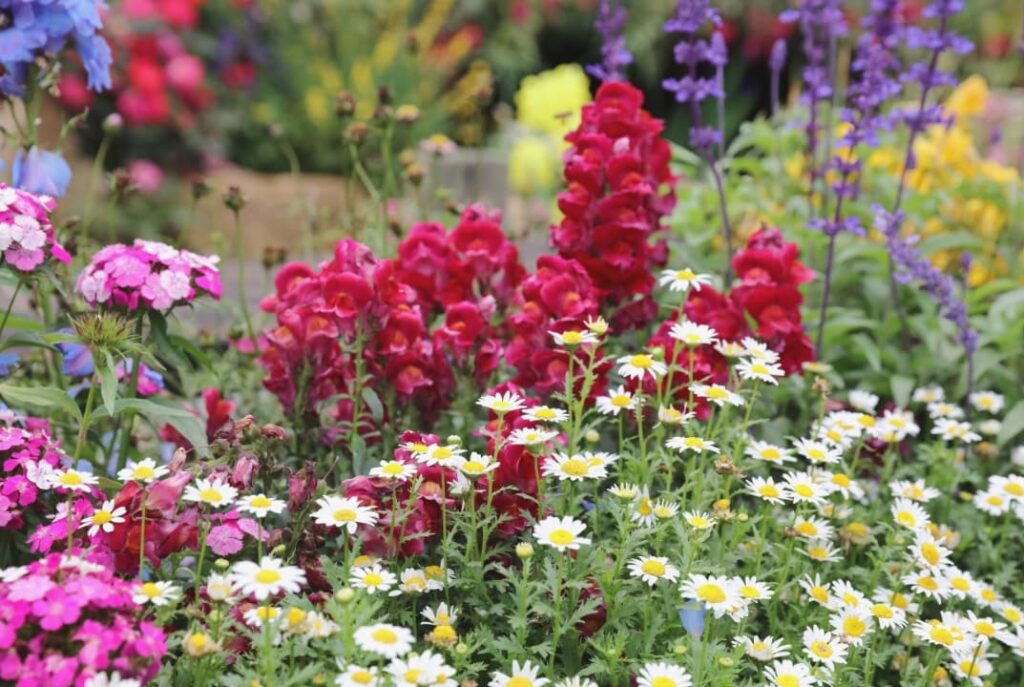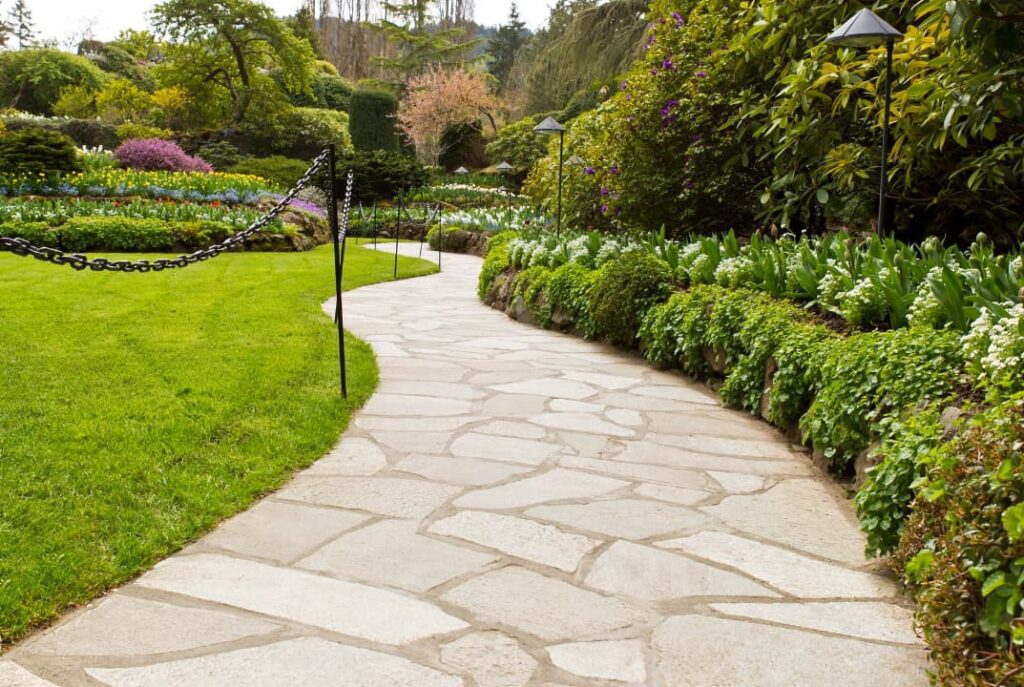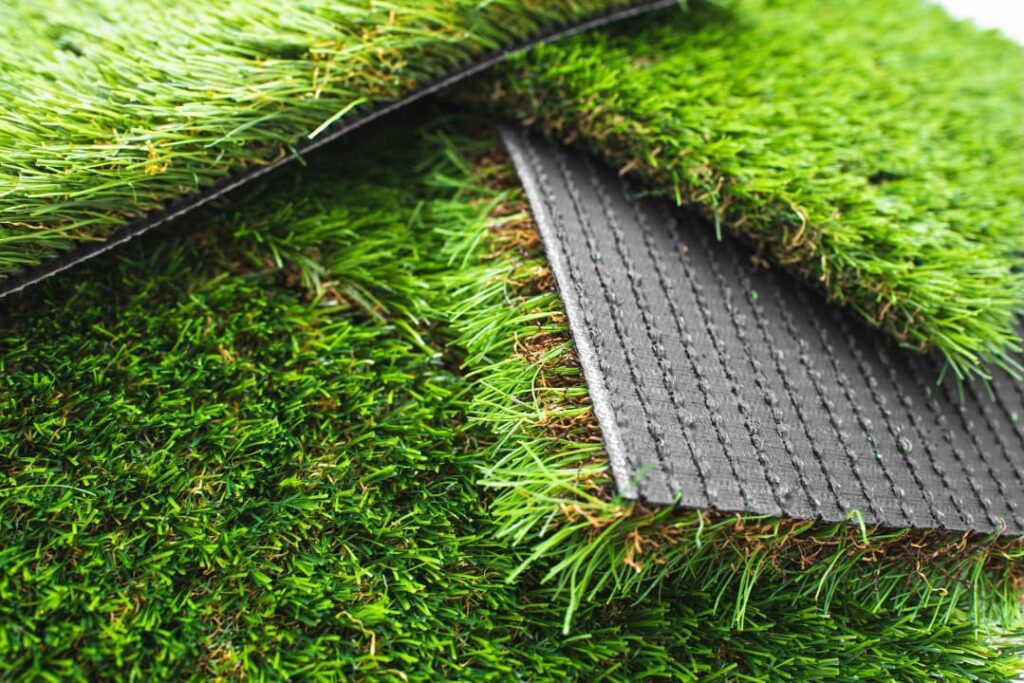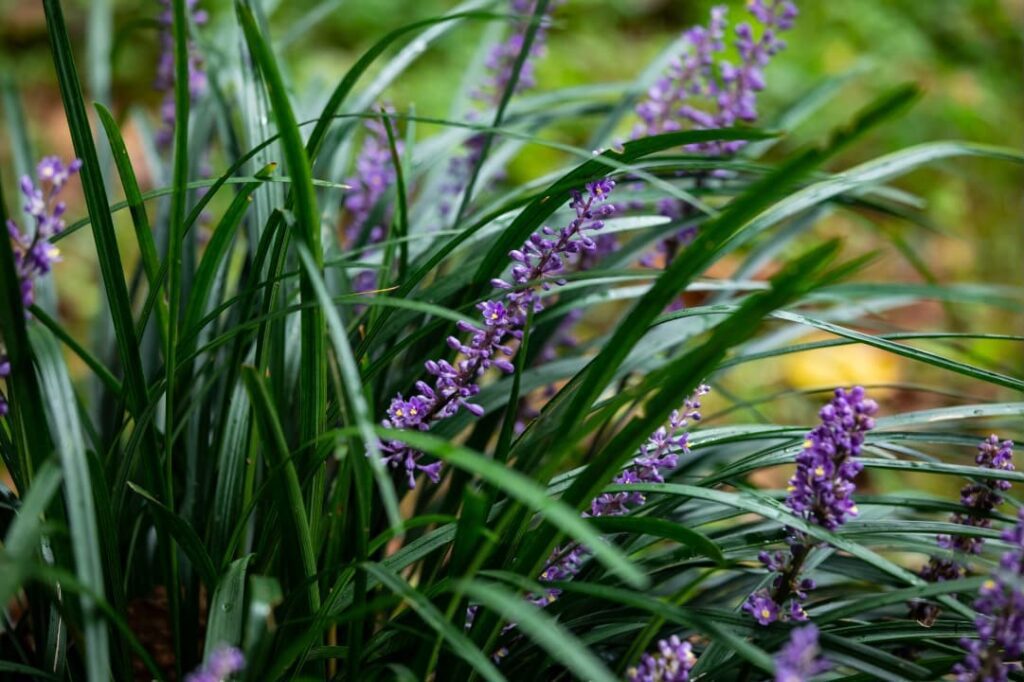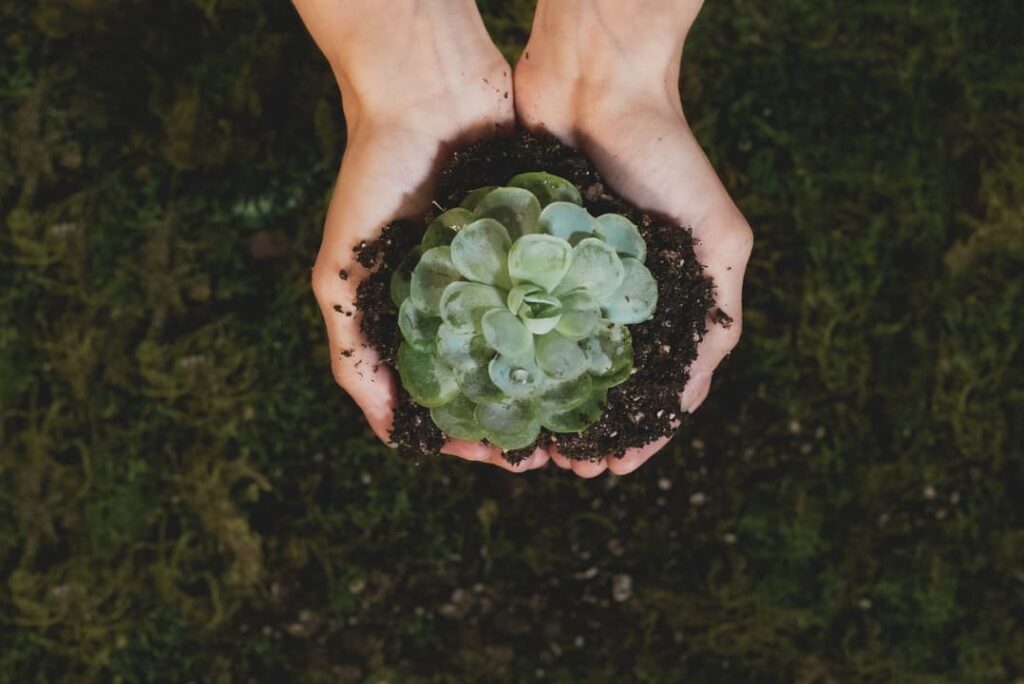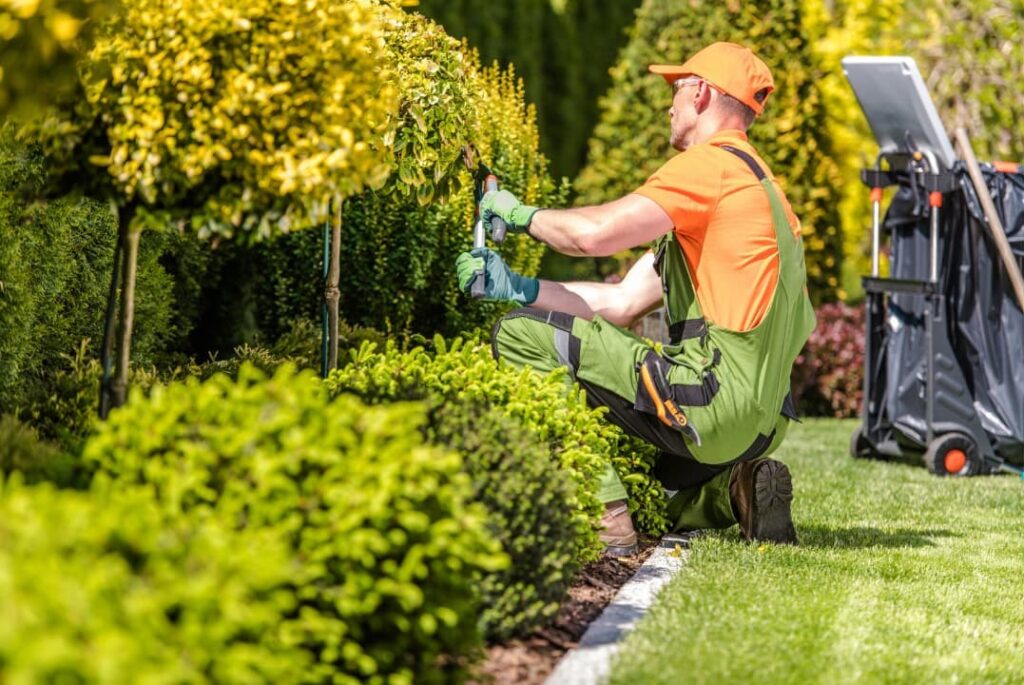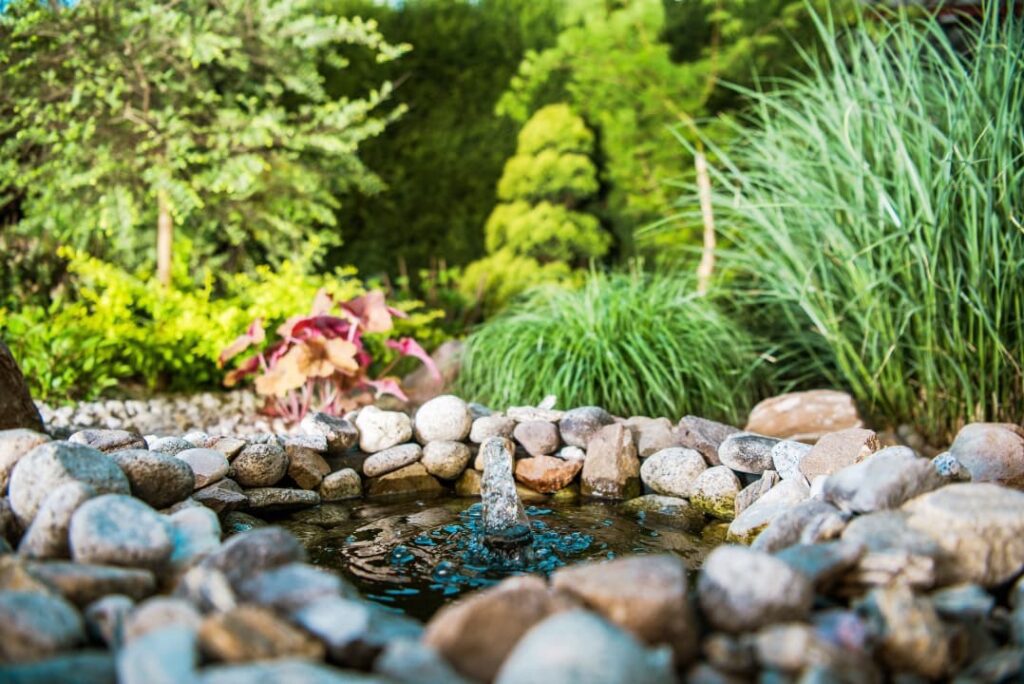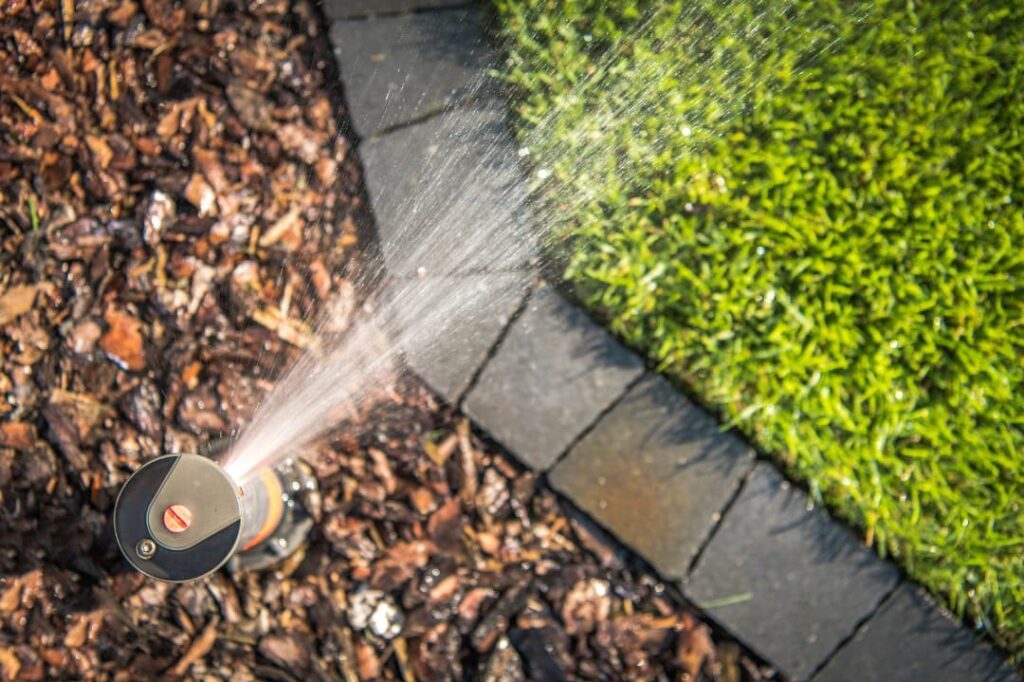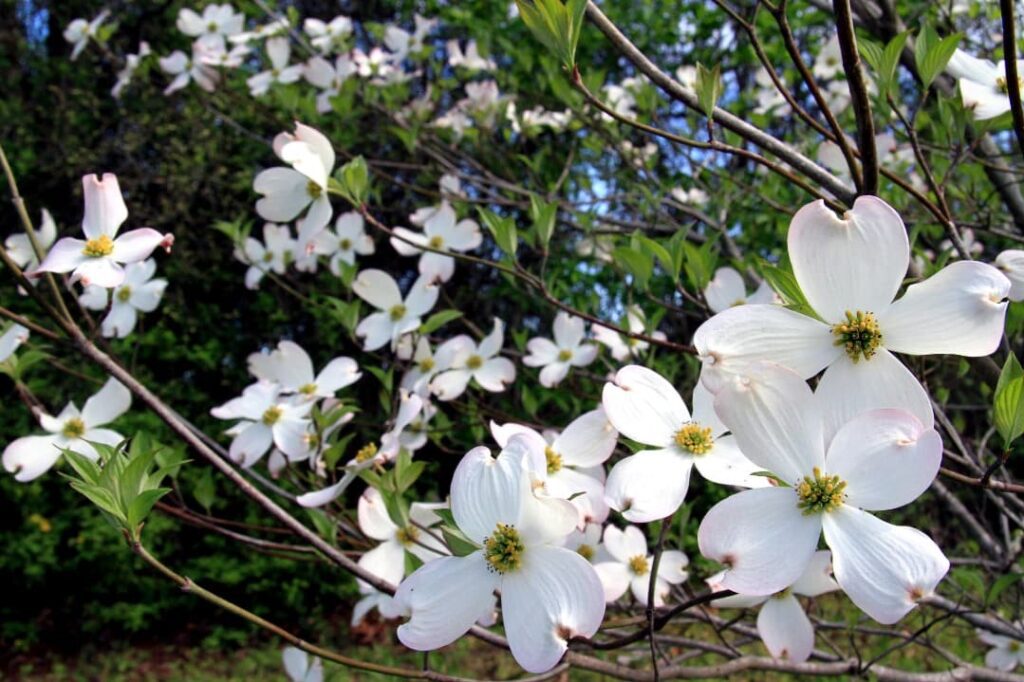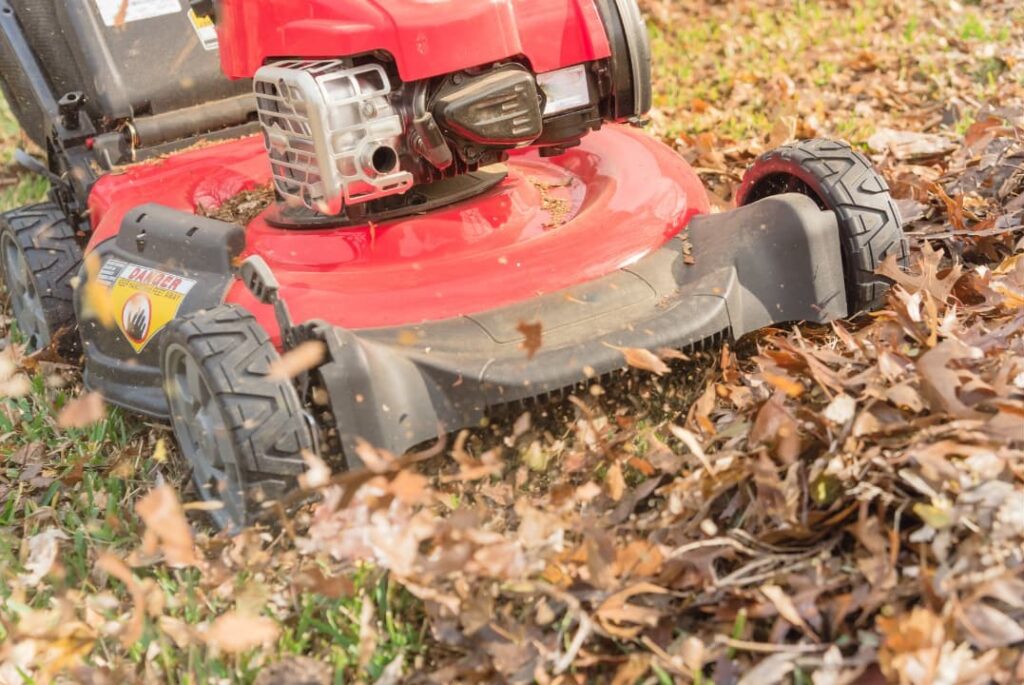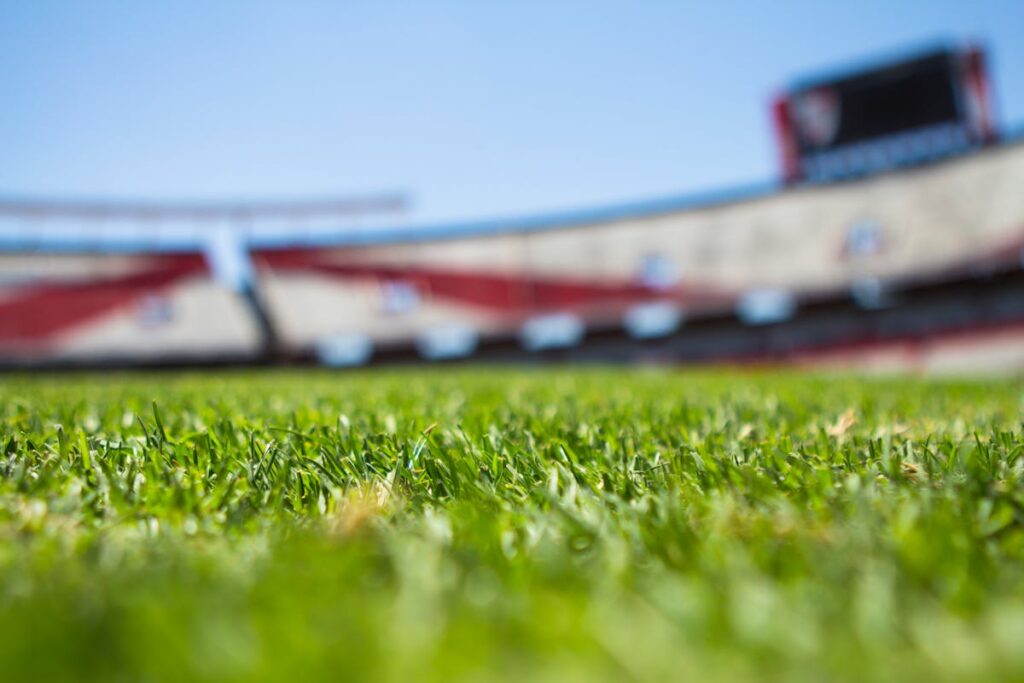1. Smart Mulching: Choose Use Rocks, Wood Chips, And Barks
Many homeowners use mulch to prevent weeds from growing, nourish the soil, and prevent soil erosion. Different types of mulch bring different looks to your yard and hold their own, specific benefits.
Any type of mulch will lower required garden maintenance. Mulch reduces the necessary amount of watering, regulates the temperature of your soil (which directly impacts plant and flower growth), and protects the root system of your plants.
However, “hardwood” mulch will require far greater landscaping maintenance than options such as shredded leaves, pine needles, and compost.
2. Perennial Plants: Plants That Come Back Year After Yea
Perennials are flowers and plants that only have to be planted once. In contrast, annuals are planted every season. By filling your yard with perennials like hibiscus, coral bells, and daylilies, you reduce the need to replant your garden. Enjoy the beautiful colors and scents of perennials and get rid of the stress of a yearly garden overhaul. Ideas and low-maintenance garden notions might help your own inspiration in choosing what is best suited for you.
3. Hardscaping: Reduce Yard Work with Strategic Design
A plush green field that encompasses the exterior of your property may seem like a dream in theory, but during the warmer months, this can require hours of daily maintenance.
Hardscaping provides an excellent, low-maintenance alternative. Cobblestone pathways, tiled patios, and concrete pool areas are all great hardscaping ideas: This will minimize the need for weeding, mowing, and watering and allow your unique personality to shine throughout your yard.
4. Astroturf: The Low Maintenance Solution
The moisture-filled climate of Illinois makes growing grass a relatively easy endeavor. However, an astroturf lawn creates a cost-effective, maintenance-free alternative. If your yard is relatively small and you have outdoor pets, astroturf may prove a good option.
Astroturf stays green throughout the seasons — no watering needed. It’s durable and malleable to the landscaping design you envision for your yard. You won’t have to worry about mowing or planting astroturf and it can last for years.
5. Monkey Grass Magic: Border Maintenance That Saves Time
Monkey grass is prevalent in Asian countries, and has become a popular staple of low-maintenance landscaping in the U.S. as well. Monkey grass is a member of the lily family and looks similar to turf, but isn’t artificial. Along with a fantastic, fun name, It makes for excellent ground covering.
If you have hills in your backyard, your yard is expansive, or you have shaded and treed areas, monkey grass is a great option. Monkey grass doesn’t require pesticides as it self-protects against pests. Annual mowing or pruning is the only maintenance this ground cover needs.
However, monkey grass shouldn’t be used in gardens as it can choke out other plants.
6. Succulent and Cacti: Drought-Resistant Beauty
Over the past decade, succulents have become a trendy plant for homeowners in any region — and for a good reason. They can grow in shallow or dry soil and prevent soil erosion. Succulents don’t require daily watering, rarely need weeding, and work well in rock gardens.
These environmentally friendly plants are also extremely cost-effective as they can be easily replicated. Succulents transform pollutants into nourishing plant food. Jade plant, hedgehog cactus and the cool-sounding dragon’s blood stonecrop are great outdoor succulents. You can grow succulents like Aloe Vera inside of your home, too.
7. Climate-Smart Planting: Native Plants That Thrive Naturally
Although you should choose plants based on their benefits, it’s important to choose plants that can thrive in your climate as well. For example, the greater Chicago area climate in Illinois is considered humid continental, which usually means a lot of moisture, hot summers, and extremely cold winters.
It’s also important to understand the microclimate in your yard and garden. This increases the time you can spend enjoying peaceful relaxation in your yard and decreases the amount of time you need to spend pruning, weeding, and watering. One more thing is that they help you create balance in landscaping ideas.
Planting for your region and garden’s climate is a fantastic way to enjoy low-maintenance landscaping.
8. Rock Landscaping: Gravel, Stones, And River Rocks
Rocks don’t have to be synonymous with barren, bleak landscapes. In fact, rocks can spotlight the yard features you love, create yard grading, and help with yard drainage. You’ll never have to stress over watering your rocks, nor are weeds an enormous issue.
If you want to add water features (such as koi ponds or waterfalls), rocks are a vital component. They’re resilient and will rarely — if ever — need replacement.
9. Automatic Sprinkler System: Better Irrigation And Watering
Most newer models of sprinkler systems can be placed on an automatic timer. This drastically reduces water waste, cuts back on your utilities bill, prevents oversaturation of your lawn, and alleviates the stress of intentionally turning on your sprinklers every day. Automatic sprinklers also distribute water evenly throughout your yard and cuts out the need for watering by hand.
10. Plant Chill Trees: Low-maintenance Shade Trees
Low-maintenance trees can make a huge difference in landscaping designs. Again, it’s important to research which trees are best for your climate. However, there are many trees that require little to no maintenance and will just thrive and chill once planted.
For example, in the greater Chicago area, dogwoods may be a better low-maintenance landscaping option than elms or maples.
11. Leaf Mowing: Turning Yard Waste into a Compost
Have you ever thought, “What if I mowed my leaves rather than rake them?” It’s not as weird an idea as you may think. Mowing leaves can eradicate the labor of raking throughout autumn. Mowing your leaves helps with decomposition and transforms those messy, crunchy piles into usable mulch or compost.
This helps prevent hours of raking and allows you to relax. By mowing your leaves once or twice after their largest fall, you benefit your yard … and your back.
How Ware Landscaping Can Help
For over two decades, Ware Landscaping has worked passionately to help homeowners in the greater Chicago area take pride in their yards. We can help you implement customized low-maintenance landscaping ideas so that you can enjoy your relaxing sanctuary.
We create landscapes and hardscapes to help you get the most out of your property. During the brutal Illinois winters, we will assist with your snow removal needs too. Call at (630) 885-6370 our professional landscaping team for a consultation today.
Frequently Asked Questions
What is the most low maintenance landscaping?
The most low maintenance landscaping combines smart design, minimal upkeep, and the right plants for your region. For truly easy-care yards, focus on low maintenance landscaping ideas like using native plants, ground covers, and drought-tolerant trees. These plants thrive in your local soil and climate, requiring less watering, pruning, and fertilizing.
Swap traditional lawn areas with landscaping ideas such as rock gardens, mulched beds, or ornamental grasses. Choose low maintenance plant varieties like evergreens, succulents, and perennials to reduce seasonal gardening tasks. For front yard appeal, consider planting hardy shrubs, trees, and flowering ground cover that block weeds and conserve water.
Strategically placed mulch improves moisture retention and limits weed growth. Incorporating drip irrigation also simplifies watering needs while reducing waste. These thoughtful landscaping choices create a balanced, beautiful landscape with far less maintenance—perfect for busy homeowners looking for stylish, sustainable yard solutions.
What landscaping ideas add the most value?
The landscaping that adds the most value to your home combines curb appeal, functionality, and thoughtful design. Well-planned landscape improvements can increase property value by up to 15%, especially when they include low maintenance landscaping ideas that future buyers will appreciate. Focus on creating a visually appealing front yard with a clear path, layered planting, and healthy trees to make a strong first impression.
Plant a mix of native plants, flowering shrubs, and shade trees that require minimal watering and routine maintenance. These choices not only lower long-term upkeep costs but also support the local ecosystem. Replace sections of high-maintenance lawn with drought-tolerant ground cover, stone beds, or mulched areas to reduce watering needs.
Add value with functional landscaping ideas like lighting for safety, planting around outdoor dining areas, or framing a pool with low-maintenance plants.
How far should landscaping be from the house for easy maintenance?
For easy maintenance, landscaping should be placed at least 2 to 3 feet away from your house. This buffer zone helps prevent moisture buildup, pest issues, and damage to siding or the foundation. It also makes regular yard tasks like watering, trimming, and cleaning more manageable.
When planning low maintenance landscaping ideas, choose compact, low maintenance plants that won’t outgrow the space or drop excessive debris. Avoid dense planting near your home’s walls—especially large shrubs or trees with aggressive roots. These can interfere with drainage and cause expensive repairs. Instead, opt for native plants, ornamental grasses, or mulched beds that require minimal gardening and provide easy access for seasonal upkeep.
Good landscape design ensures air circulation and light reach the structure, preventing mold or mildew growth. Incorporate stone borders, gravel strips, or hardscape elements like pavers to separate plantings from your home. These ideas reduce watering needs and simplify ongoing maintenance landscaping.


